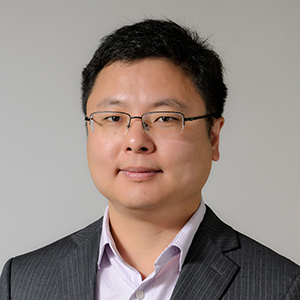News & Events
MSC03 2060
300 Terrace St. NE
Albuquerque, NM 87131-0001
Physical Location:
Clark Hall
Phone: 505-277-6655
chemistry@unm.edu
MSC03 2060
300 Terrace St. NE
Albuquerque, NM 87131-0001
Physical Location:
Clark Hall
Phone: 505-277-6655
chemistry@unm.edu

Profile: Dr. Jie He received his B.S. and his M.S. from the Sichuan University, China in 2005 and 2077, respectively. He received his Ph.D. at the Universityé de Sherbrooke, Canada in 2010. Dr. He was a Postdoctoral Fellow at the University of Maryland, College Park from 2011 until 2013. He is currently the Principle investigator for the Hybrid Materials Group and is an Assistant Professor in the Department of Chemistry at the University of Connecticut, Dr. He's research interest include: Programmable synthesis of polymer/inorganic hybrid materials, biomimetic self-assembly of hybrid materials at all scales, molecule-mimicking self-assembly of anisotropic colloids in solution, and biomedical applications of hybrid materials and their assemblies.
Abstract: Loading metal ions and nanocatalysts on polymer supports to produce “soluble” catalysts has long been used in catalysis. Harnessing synergies at the interface of polymers and inorganic catalytic components is, however, still challenging. Our group works on developing new synthetic methodologies of hybrid polymer/inorganic materials (metal ions and nanoparticles) with well-defined chemical compositions, nanostructures and synergetic functionalities. We seek to understand the role of polymers in tuning the interface of hybrid materials in order to control the catalytic properties of inorganic materials. My talk will show our recent effort on, i) the development of new synthetic methods to prepare polymer-tethered nanoparticles and explore the role of polymer tethers in the self-assembly of nanoparticles in solution and solid states; and ii) control over the electronic properties and accessibility of nanoparticles or metal ions that are incorporated in polymer frameworks. I will introduce the concept of polymer-tethered nanoparticles and the application of hybrid building blocks to prepare highly crystalline mesoporous oxides. The add-on functionality of metal nanoparticles to hybrid materials will be deliberated in the context of photocatalysis. The incorporation of metal ions within polymeric frameworks as functional metallopolymers to mimic natural metalloenzymes will be discussed at the end.
See Announcement